So many workout machines can get your head spinning, and many of their names may possibly even slip your mind entirely!
The below is a list of common workout machines names, their costs, benefits, and cons to aid in remembering their key details and add a refresher course of their specs!
Leg Curl Machine
The Leg curl, or hamstring curl, is a workout machine named such as they are designed to work and strengthen the hamstring and leg muscles independent of other areas and muscles of the body.

While limited in function, they do provide serious toning and strengthening of the hamstrings or legs for those who desired something highly specialized, such as those recovering from an injury or needing rehab for those muscles in particular.
Pros
- Effective and safe for those in rehab or needing to isolate and specifically strengthen the legs and hamstrings in particular.
- Burns a fair amount of calories per session.
- Tones the muscles well and fairly effectively.
Cons
- Injuries are a risk of using the machine due to the upper muscles which also control the movement of the legs, such as the hips, and upper thighs, not getting the activation and toning needed to keep pace with the lower body, thus putting undue strain on them.
- Best to use the machine as an occasional workout tool and not overdo it and overtax the muscles in the legs.
Cost
Generally anywhere from 300 to up to 3,000 dollars, depending on the specifics of the machine and its individual traits.
Squat Machine
The above workout machine’s name is the squat machine, however, there are several variations, but they all exist to serve a similar function, which is to simulate the effects of proper barbell and weightlifting form.
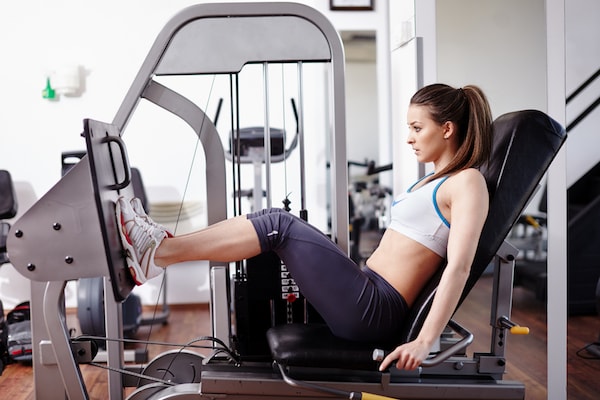
This allows you to get the benefits of the muscle toning and activation, but without the injury risks or bad form habits that can be picked up by using a barbell incorrectly.
Pros
- Effectively builds and tones muscles of the lower body, such as the legs, thighs, hips, and calves.
- Enforces correct form because the machine has the user in a fixed position when in use.
- Lower injury risk than barbells.
- Safe for those who are in rehab or recovering from injuries.
- Lower strain on the back, knees, and shoulders than traditional barbell lifting.
Cons
- Slight injury risk with misuse such as improper form, as even with the fail-safes of the way the machine is set up, you can still incorporate your existing bad habits when using it.
- Many don’t have very well designed instruction and assembly pamphlets if any at all, unfortunately, which could lead to you needing to pay a costly professional fee to have your workout machine put together for you.
Costs
Anywhere from the range of 200 to 2,000 dollars, depending on the kind of squat machine, its features, and additions.
Ab Crunch
This workout machine is rather aptly named considering it’s meant to aid in training and strengthening the abdominal muscles, which is often something the vast majority of people aspire to do because of all the media images and ads with famous people who have perfectly flat and toned stomachs with six-pack abs.
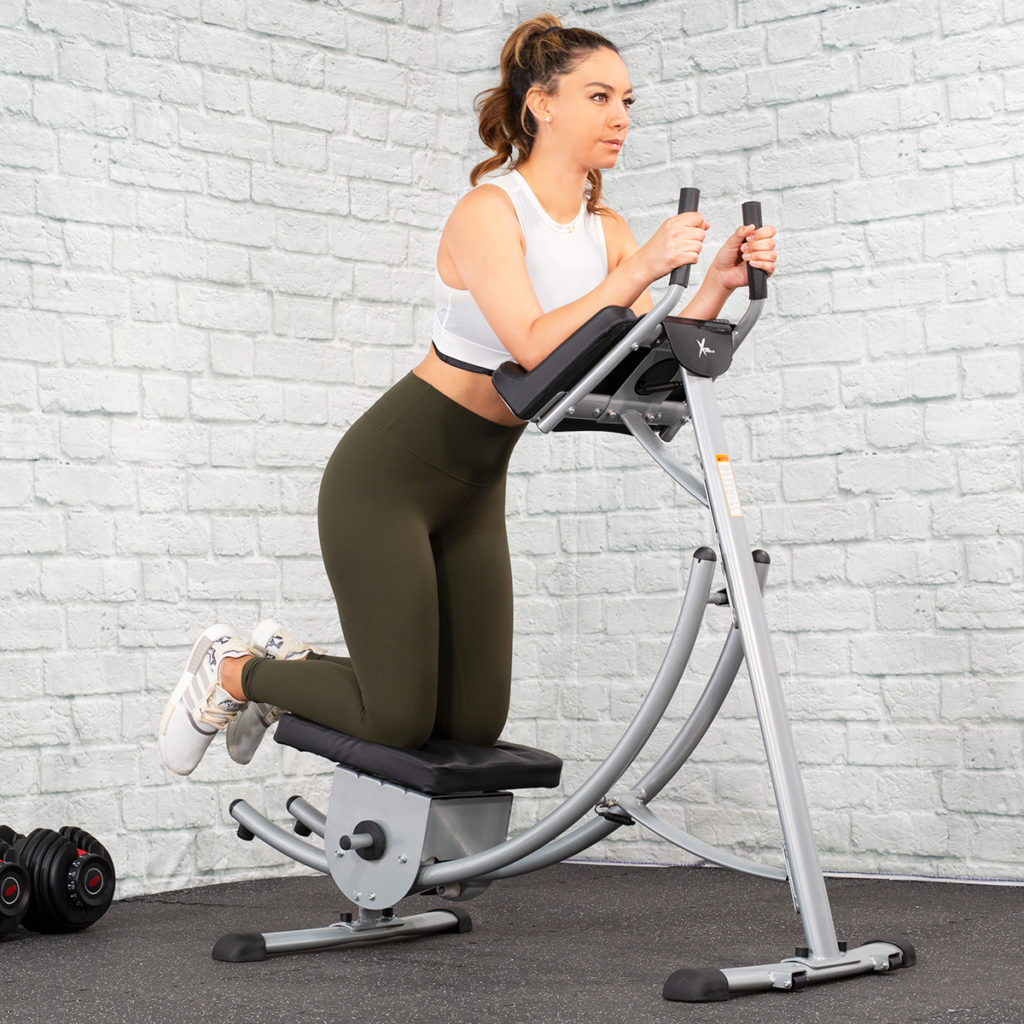
But how do they stack up? Let’s take a look!
Pros
- Great for conditioning and strengthening the abdominal muscles effectively.
- These machines are often very easy to use, so little room for error or complications that can arise from general misuse and other typical mishaps associated with workout equipment.
- Many offer a variety of resistance settings for a tailored workout scaling and adjustment to what you desire and are most comfortable with.
Cons
- Often very pricey and cost-prohibitive for the average person.
- Limited range of muscles that get worked, which is generally considered unnatural to the body, as the muscles connected to the abdominals get left behind, making them more vulnerable to injury while overtaxing the abs.
- Difficult assembly and complicated to put together the machine by yourself if you don’t have anyone else around to help, which is a real headache at times.
Costs
400 dollars on the lower end, and up to 3,000 on the upper range! See what I was saying about expensive? It’s a unique and interesting machine to add to one’s fitness repertoire, but the price barres many from entry.
Cross Trainer
One of the more familiar pieces of equipment in this workout machine names list is the cross trainer, aka the elliptical trainer, which resembles an exercise bike without a saddle or seat on top.
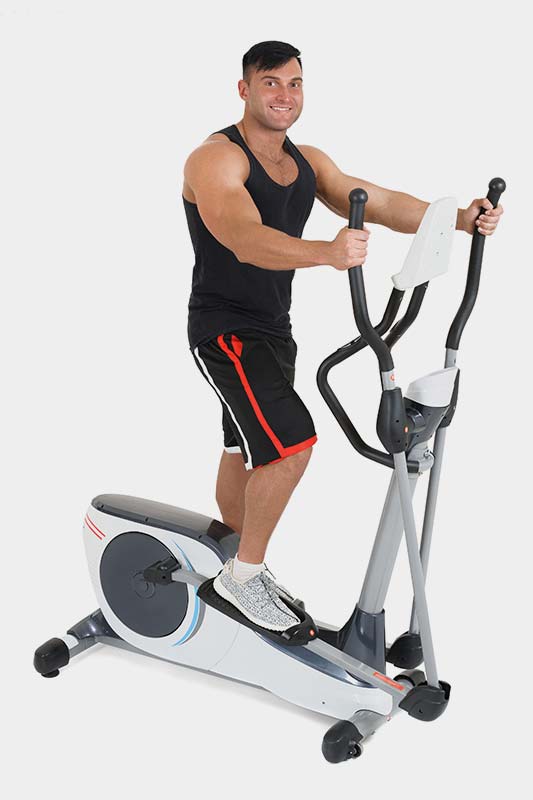
These machines are highly popular, and for good reason, so let’s get into the specs!
Pros
Like the elliptical and the exercise bike, the cross trainer is very effective at burning calories easily and quickly, making it a great tool for those who want to improve their weight loss efforts and step it up a notch.
- The machine is low impact, meaning it adds very minimal strain on the joints, and so it’s safe for practically anyone to use without issue, including those with new and old injuries, arthritis, and other chronic pain and joint issues.
- Cross trainers are very easy to use due to the nature of the machine itself, as all it requires are peddling and moving the arms with the handles, so when it comes to workout equipment, it doesn’t get that much simpler.
- The elliptical cross trainer provides a full-body workout, which enables you to tone and strengthen most of the major muscle groups of the body, such as the core, arms, shoulders, back, and legs, making it a great choice if looking for versatility.
- Many elliptical cross trainers come in smaller and or folding size options now, making them better accessible for those with limited floor space in their homes or apartments.
Cons
- The movement pattern and pedals can be awkward and require some getting used to with the associated learning curve.
- Some may find using the machine consistently to be difficult because of its somewhat repetitive nature, especially if used to outside stimulation via jogging or running.
Cost
Mainly 200 to 500 dollars, with some models going up to 2k, however, there are plenty of perfectly serviceable ones in the aforementioned lower ranges.
It just depends on what features and add-ons you may desire and feel are beneficial.
Vertical Climber
Some workout machine names are self-explanatory, the vertical climber is pretty much one of those things, as it’s meant to simulate the motions of climbing.
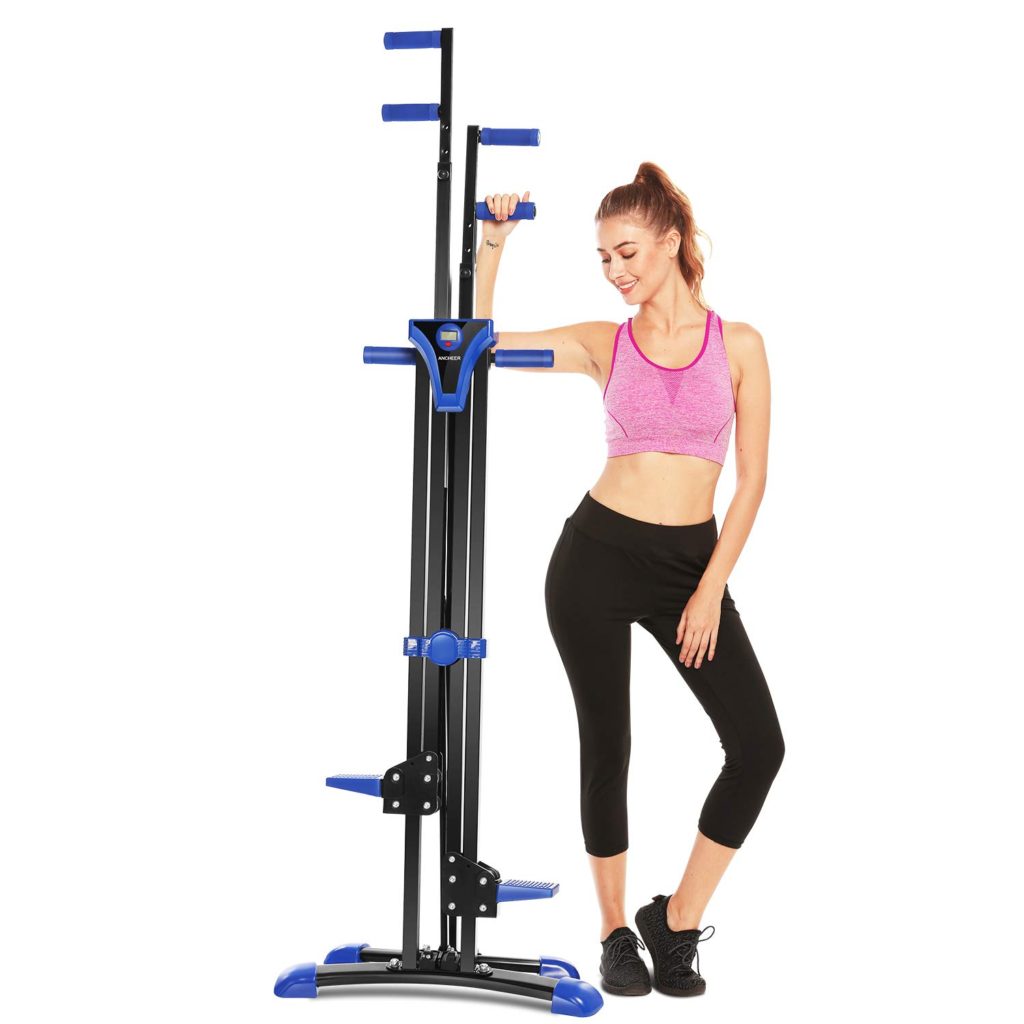
Vertically, of course, though many levels of resistance and ways to use the machine are possible.
So, let’s get into the specifics!
Pros
- Amazing for both cardio and strength training, as it works most major muscle groups and tones them effectively and efficiently.
- Many models are foldable or are small and lightweight, making storage as well as finding a place for them a breeze.
- Easy to use, no real learning curve to speak of once acclimated, and it’s the type of machine that lets you go at your own pace, which is always helpful.
- Burns calories like crazy, so those who purchase a vertical climber for weight loss definitely won’t be disappointed in the results if used consistently.
- Vertical climbers are very low impact, making them safe and suitable for the vast majority of people to use, even those who have knee or joint issues.
- Vertical climber workout times range from an average of 20 to 40 minutes, making it easy to squeeze in an effective workout if you have little time on your hands.
Cons
- Some have low weight limits, making them unsafe to use for more heavy set people, however, more durable and stronger models exist.
- Can cause injuries if one falls off since most of the common machines on the market are often around 6.5 to 7 feet tall.
Cost
Many of the common brands are around 150 dollars to 300 or so, but the prices can definitely go into the thousands range depending on their size, durability, and extra features.
Stair Machine
This is another one in this list of workout machine names that leave little to the imagination and tell you upfront what they’re about.
The stair machine is, of course, a machine meant to simulate walking up stairs, with many resembling staircases or escalators themselves.
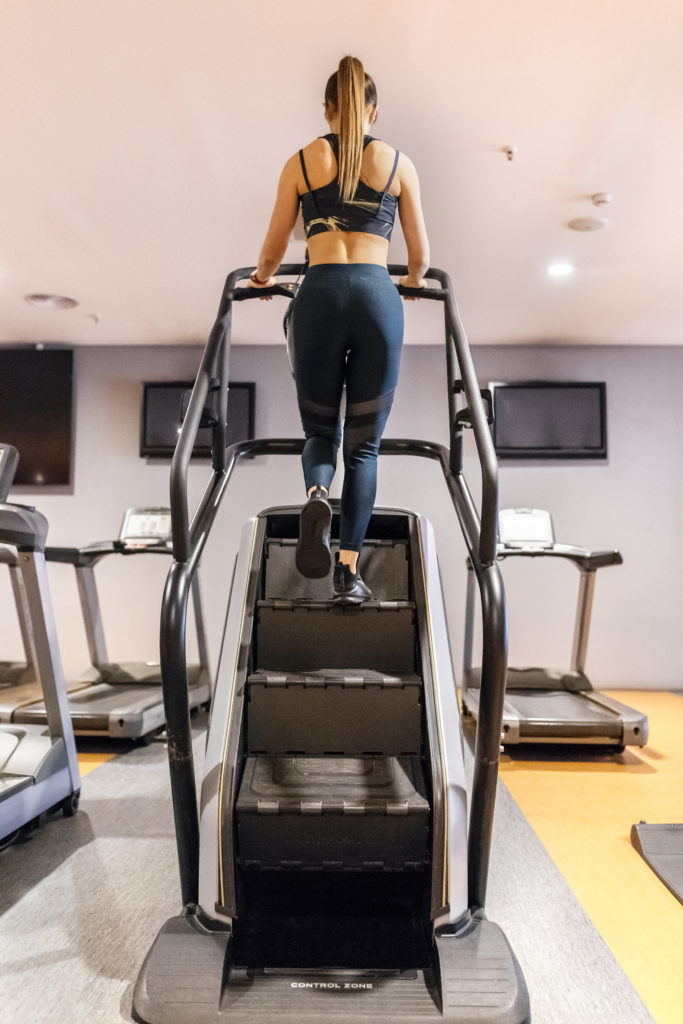
Walking up stairs is considered one of the more taxing tasks that are commonly done in everyday life, so these machines provide a great workout if used well and consistently.
Let’s move on to the stats!
Pros
- The stair machine is a very versatile piece of equipment because it can be used for both muscle building and cardio, as well as aerobic benefits.
- Is low impact, so puts minimal strain on the joints and muscles, very helpful for those who have issues with soreness when using other machines.
- Stair machines burn a ton of calories due to their ability to push the user in the same way climbing stairs do regularly, so it’s a highly effective workout and great for losing weight.
- Very easy to use because the workout involves walking up the stairs at an adjustable pace and the length of time you desire; can’t get much easier!
Cons
- Works primarily the muscles of the lower body, so not the best if you’re looking for something closer to a full-body workout.
- Can create back pain for those dealing with issues in the back, as many have a slight incline which will aggravate injuries and put pressure on them.
- Can be exhausting at first to use when you’re just starting out, so many people tend to give up and not use their stair machine consistently.
Cost
One of the major downsides of the stair machine is their cost, often no less than 1k, going up to 4,000 easily, so it’s very important to keep that in mind if you wish to consider them for your next purchase in the near future.
Stepper machines are smaller and more like a cross trainer, and cheaper, so they can serve as an alternative if you want to get a gauge on if stair machine is right for you.
Skillmill
One of the newer pieces of equipment on this workout machine name list is the skillmill, aka, the curved treadmill, which is exactly as it sounds. It’s essentially a concave treadmill that has a perpetual incline and tilt to it.

A curved treadmill provides a newer and more unique workout experience in comparison to a regular treadmill, but that is not without its pros and cons though.
So let’s take a look!
Pros
A new and interesting variation in the typical treadmill workout experience, so those who easily tire of them might find this type more enjoyable and enticing to use.
- Running on a curved and concave treadmill allows the user to have a more natural running experience, lessening the chances for stress fractures, soreness, and other types of injuries that can come from the flat and fixed running pattern of the usual treadmill.
- Not running on a flat surface increases the intensity of your workout, which means it tones muscles in the lower body more effectively and burns more calories than a regular treadmill.
- These treadmills require no electricity and are entirely powered by the user, making them more eco friendly, and better on your wallet if your electric bills are causing you issues.
- The curved belt and tread of the skillmill make it easier to grip and run on, lessening the chances of injuries from falling or sliding off the machine.
Cons
- Doesn’t completely replace running given its limited scope of motions, so if you’re training for a marathon, this may not be the tool for you.
- Very expensive, not affordable for those who are on a tight budget.
Cost
As mentioned above, the major sticking point of the curved treadmill is its high price tag, since you won’t be able to get one for less than 1,500 dollars, many recommended and preferred models going up to 4k easily.
They’re a great tool for those who have the funds to spare on such an expensive piece of equipment, however, and can easily outpace a regular traditional treadmill.